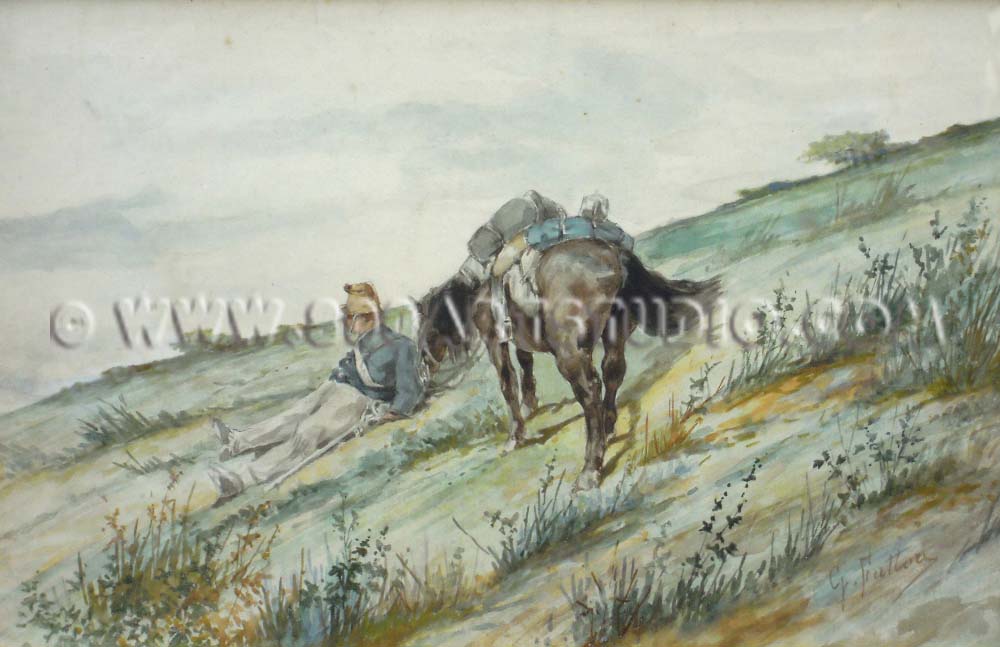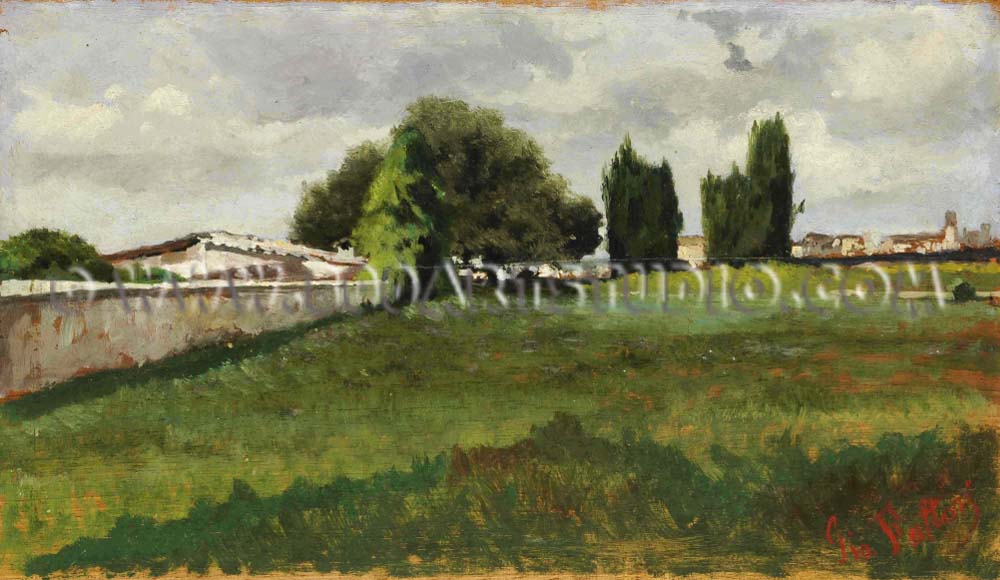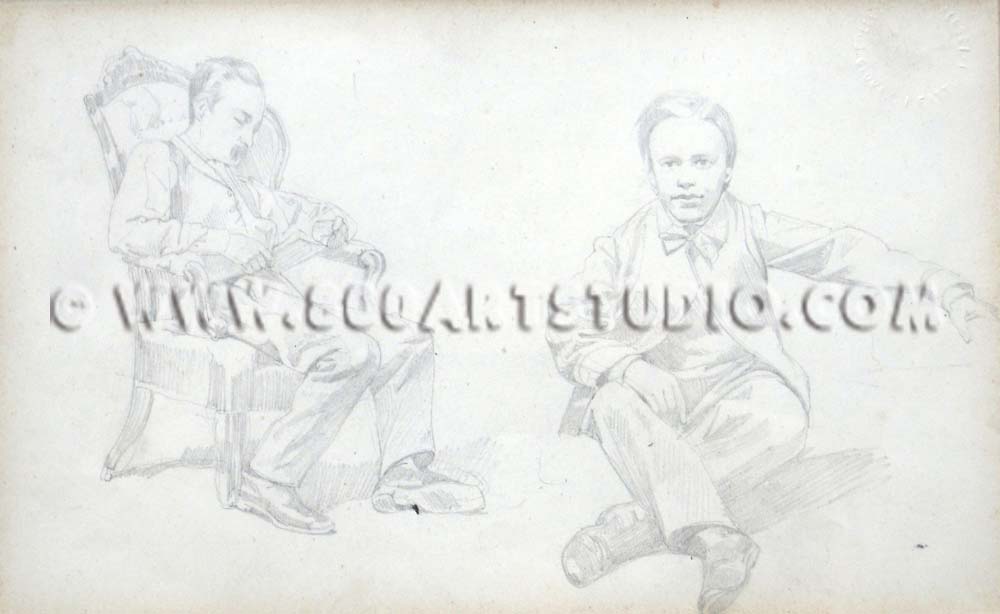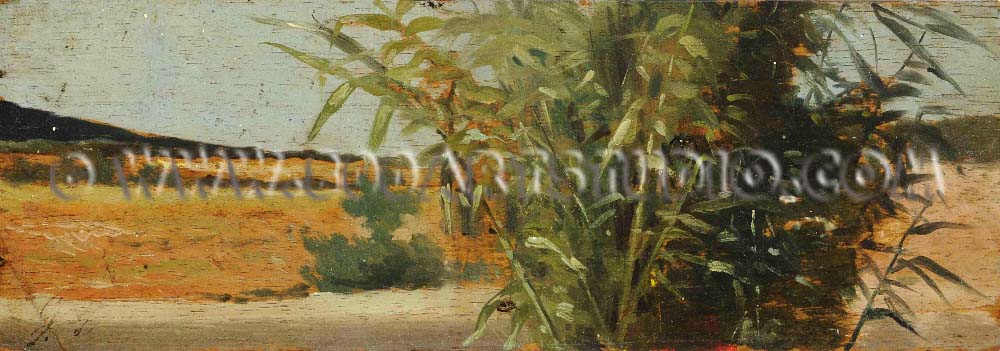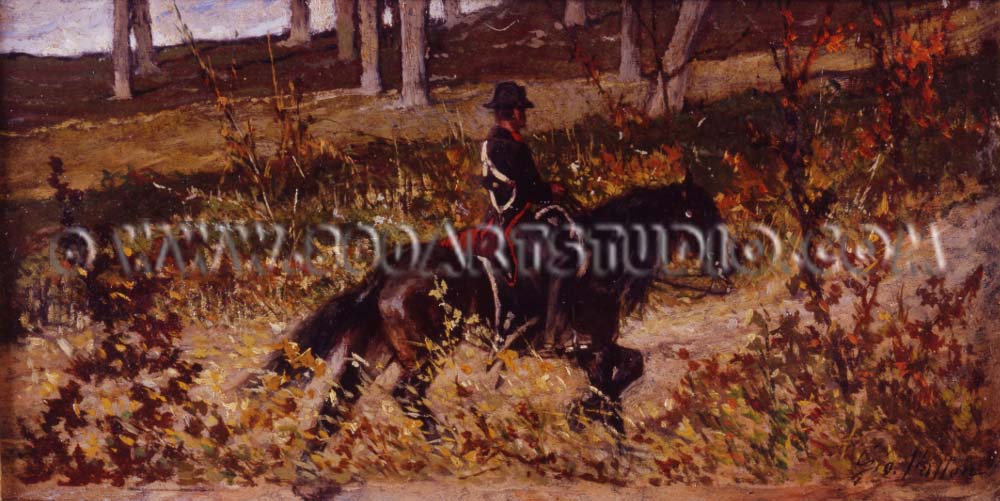Born in Leghorn, when he was very young he studied in the studio of Giuseppe Baldini an artist from Leghorn. In 1846 he moved to Florence and chose to study at the school of Giuseppe Bezzuoli. He soon left it and went instead to the “Accademia di Belle Arti”, but did not attend it regularly. Between 1848 and ’49 Giovanni Fattori neglected his painting – few of his early works have survived – and, although he did not take an active part in the war for independence he was involved in distributing secret publications in Tuscany.
In 1853 he was to be seen at Caffè Michelangelo, where he learned about contemporary art movements. Between 1853 and ’54 he studied realism, together with the Turin artist Andrea Gastaldi. In 1855 Giovanni Fattori took part for the first time in the “Promotrice fiorentina” with the work “Ildegonda”, a subject taken from a short novel by Tommaso Grossi, an example of a Romantically inspired work with a literary – historical theme typical of his early period culminating in “Maria Stuarda”, painted between 1858 and 1860. In 1859 he returned to realism, painting small scale scenes of military life that were admired by the Roman artist Nino Costa, who encouraged him to apply his innovative studies of colour and light to painting “en plein air”, turning his back on history painting.
His artistic career took off in these years: in ’61 he won the Ricasoli competition with the painting “Dopo la battaglia di Magenta” (After the Battle of Magenta); he exhibited four works at the 1864 “Promotrice”. In the meantime he decided to go back to the town where he was born to nurse his wife who had tuberculosis. Some wonderful portraits belong to this period such as that of his sister-in-law and his cousin Argia. But he still worked on military themes right up to the end of the 60’s when he decided to concentrate on landscape painting, in 1866 he painted the lovely “Rotonda di Palmieri” (Palmieri’s round terrace), where colour is now used to give structure to his work. In 1867, following the death of his wife, Fattori stayed with Diego Martelli at Castiglioncello, where he worked very hard. From 1869 he was employed as a teacher at the “Accademia di Firenze”. In 1872 he went to Rome and in 1875 to Paris with Francesco Gioli, Ferroni and Niccolò Cannicci.
In the Seventies there was a strong preference for solid construction of space in his works, with complete absence of narrative. This can be seen in works such as “Riposo” (The Rest) or “In vedetta”. In the 80’s Giovanni Fattori became particularly interested in rural themes especially herds of cattle, horses and the Maremma cowherds. Although Fattori’s work was respected and admired by his colleagues and friends, who remained constant to the end, on account of his shyness and diffidence, it was kept far from the recognition of the public at large.
Written by: Gioela Massagli – Translated by: Catherine Biggerstaff
© Studio d’Arte dell’800


